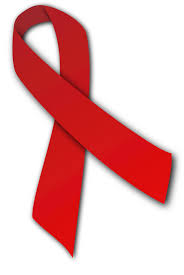By Sue-Ann Wayow
THE Caribbean region has a drastic decrease in AIDS-related deaths, the steepest decline among eight regions globally for the period 2010 to 2024.
Data from the latest Global AIDS Update Report, released by UNAIDS, shows the Caribbean recorded a 62% reduction in AIDS-related deaths.
According to the report—AIDS, Crisis and the Power to Transform, over the last fifteen years, there has been a 54% decline in AIDS-related deaths globally.
The Caribbean is well above the global average at 62%, a release from UNAIDS Caribbean on Thursday.
The report credits the widespread availability of anti-retroviral treatment (ART) for the progress made since 2010.
Reductions have also been recorded in West & Central Africa (60%), Eastern & Southern Africa (59%), Asia & the Pacific (53%), Western & Central Europe and North America (48%), Latin America (31%) and the Middle East & North Africa (6%) while Eastern Europe & Central Asia reported a 48% increase over the same period.
UNAIDS commended governments, communities of people living with and most affected by HIV, and key partners, including the United States President’s Emergency Plan For AIDS Relief (PEPFAR) and The Global Fund, among others for the progress made across the region.
Director of UNAIDS Multi-Country Office in the Caribbean Dr Richard Amenyah said, “The Caribbean’s stellar performance and achievements are commendable. It shows the resilience of a region constrained by a myriad of social, economic and other challenges such as high debt, declining external funding, and natural disasters and how critical political leadership is to safeguard people’s health without distinction.”
He added, “Despite the ongoing challenges, the Caribbean continues to show that great things can be achieved when governments and all stakeholders, including people living with HIV and key populations, work together to protect and promote good health and well-being.”
In 2010, only 53,000 people living with HIV were on treatment in the Caribbean. That year, 13,000 adults and children lost their lives due to AIDS-related conditions.
By 2024, the number climbed to 250,000 people on treatment—with 50,000 of them added between 2020 and 2024.
Today, 85% of people living with HIV in the Caribbean know their status, 74% are on treatment, and 66% are virally suppressed (up from 33% in 2017), the release stated.
Last year, deaths declined to 4,800 deaths (down from 6,100 people in 2020).
Globally, new HIV infections have been reduced by 40% since 2010 but only 21% of new infections have been reduced in the Caribbean.
In 2024, there were 15,000 new infections with Haiti, the Dominican Republic, Cuba, and Jamaica accounting for 90% (Haiti contributed 38%) and young people (15–24 years) account for 25% of new infections overall.
Dr Amenyah said, “Governments must continue to prioritise increasing domestic resources, integrate HIV into broader health systems, innovate to keep people living with HIV on treatment toward achieving viral suppression and ensure equitable access for young people and key populations to prevent new infections. Only through sustained partnership and greater country ownership can we end AIDS as a public health threat by 2030 in the region.”
![]()














